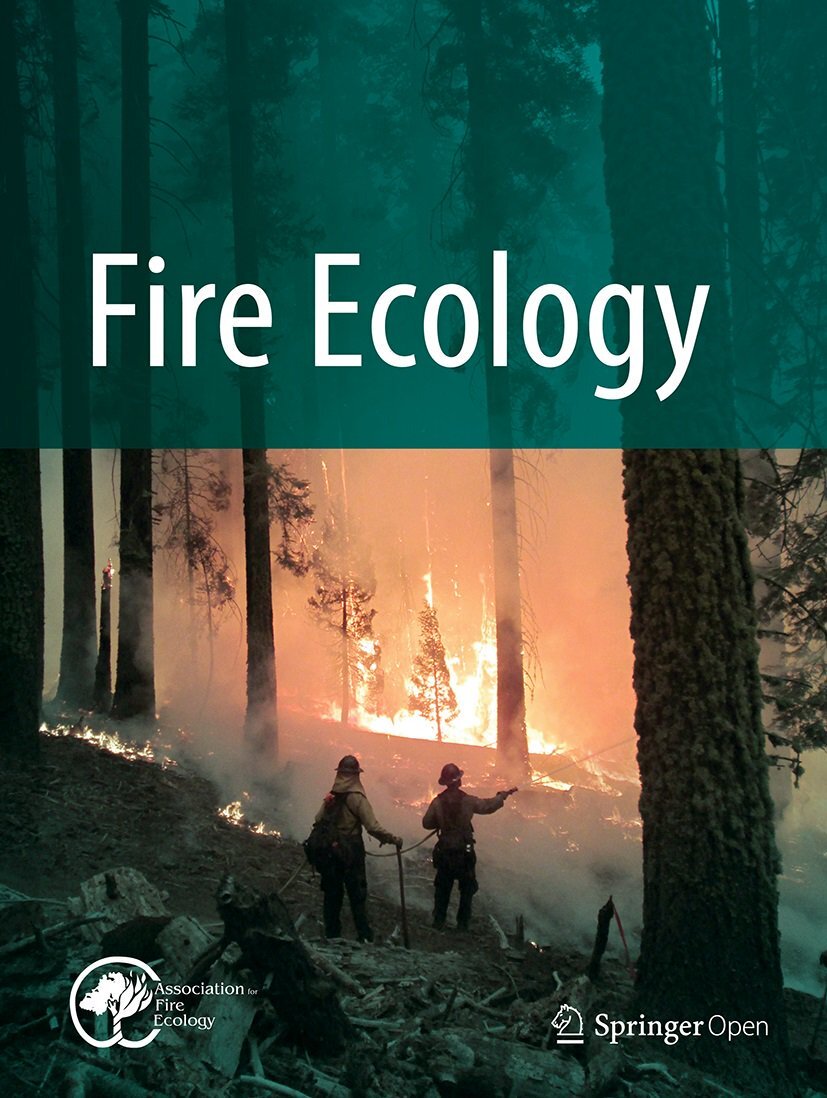In Memoriam
Leon (Lee) F. Neuenschwander
June 5, 1946 - June 1, 2022
Lee Neuenschwander conducting prescribed burning in sagebrush to improve wildlife habitat in southern Idaho. Photograph by Steve Bunting.
Born in Murray, Utah, Lee Neuenschwander attended a one-room schoolhouse until he moved to Davis, California for high school. Lee then joined the US Air Force and was a medic moving the wounded and dead from Vietnam. He also was a field medic and helped save lives during the Tet offensive. At Victorville Community College he loved acting; this forever shaped the way he taught. He also worked for a professor milking Mojave green rattlesnakes to make vaccines for the military maneuvers on the Mojave Desert for troops that were destined to Vietnam. Among other things, he drove ambulances, worked as an oral hygienist, and helped deliver babies in the obstetrics department at the Air Force base. Lee studied ecology under Dr. Richard Vogel of California State University to receive his Masters’ degree in Botany, and then began working with Dr. Harold Biswell of the University of California, Berkeley. He married Betty Jean in 1972, shortly after starting his PhD program in Wildland Fire under Dr. Henry Wright of Texas Tech University.
He arrived in 1975 at the University of Idaho to start and build the Fire Ecology and Management Program, which has grown into one of the best in the world. His best friend Steve Bunting joined him a few years later, and together they emphasized fire ecology and the use of prescribed fire in land management. Applied ecology was and is central, as he incorporated the appropriate use of technology into teaching and research.
Lee Neuenschwander teaching prescribed burning in forests. Photographer unknown.
Dr. Neuenschwander’s teaching, research and outreach influenced the way fire and forest management were done. His mapping of fire risk across Colorado presaged the recent large fires burning in many different times of the year there. He was instrumental in getting fire and fire ecology considered in the forest health and landscape management in state parks in Idaho, and in dry forests throughout the interior western US. In his Prescribed Burning Laboratory course, students had to plan, conduct, and then evaluate the degree to which the burns met treatment objectives. He initiated this course at the University of Idaho, one of just a few taught in the US. In the class, students were actively involved in writing burn plans. Penny Morgan remembers Lee Neuenschwander telling her that in this class the students thought they were learning about fire when they were also learning about being effective leaders. This was especially true for the graduate students who he put in leadership positions for all stages of planning and conducting burns. Lee worked closely with managers, including in interagency training, in designing programs such as Continuing Education in Fire Management, and in talking about how research was addressing the questions managers had (and sometimes even addressing questions they didn’t know they had). In all his teaching and outreach, he integrated fire ecology as part of effective fire management. He was an advocate for use of fire, including prescribed burning. He was a master at working with the press as well.
Dr. Neuenschwander’s most significant contributions to fire ecology and management are through his students, especially graduate students. He consistently attracted and chose good graduate students, inspired them, and prepared them well as leaders. He strove to get students out of the classroom and into the field as much as possible. His former students have influenced fire management programs such as Steve Bakken (California Dept. of Forestry), Tom Zimmerman (National Park Service and US Forest Service), Brian Shiplett (Idaho Department of Lands), Louisa Evers (BLM and US Forest Service), just to name a few former students and their agencies. In his position as Assistant Director for the Rocky Mountain Research Station, Jim Saveland shaped fire research. Brian Oswald is the Joe C. Denman Distinguished Professor of Fire Ecology at Stephen F. Austin State University, and past President of the Association of Fire Ecology. Penny Morgan is Professor Emerita of the Department of Forest, Rangeland, and Fire Sciences at the University of Idaho. Many others are or were leaders as fire professionals in federal and state land management agencies, with tribal natural resource programs, in private consulting firms, and in academics. Lee often said he was extremely proud of his graduate students. All were honored and proud to have been his graduate students.
Lee Neuenschwander in 2007 after receiving the Harold Biswell Lifetime Achievement Award from AFE.
He had many awards and recognitions. He was most proud of two: the Harold Biswell Award for Lifetime Achievement given by the Association of Fire Ecology, and the Outstanding Alumni Award from Texas Tech University. His contributions to Idaho State Parks and to the Boise National Forest were also significant in changing forest management for ecosystem health and restoration. Lee had more than 60 publications over a wide range of topics from forest health to post-fire succession, soils, and microsites for tree regeneration to a review of international studies of slash and burn agriculture from all over the world. He worked with Cecil Andrus when Andrus was Idaho governor and then US Secretary of the Interior during President Carter's administration.
Lee always made learning fun, challenging, and relevant. There are many colorful stories about Lee, particularly experiences with respect to taking students on field trips. He loved practical jokes, and he was a good sport when they were played on him. Anyone who knew Lee can attest to his enjoyment of April Fool’s Day. Most followed his advice: “Do not admit to anything” in regard to April Fool’s Day. He was memorable, and a visionary builder.
Lee will be missed by many as a leader, a mentor, and a friend. He has a lasting legacy in Fire Ecology.





